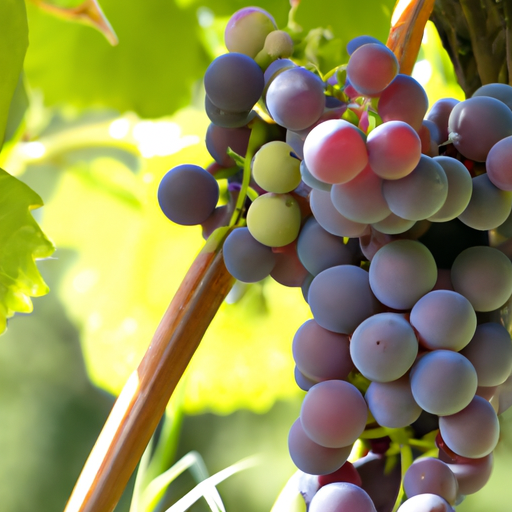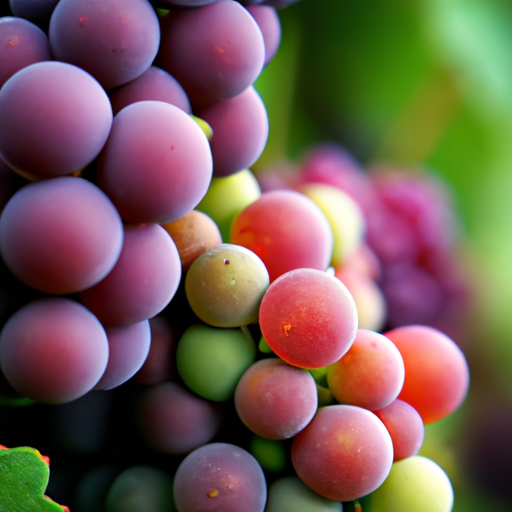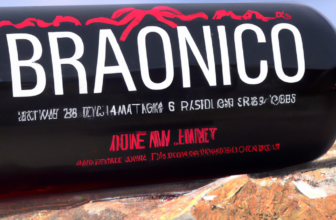
The Fascinating World of Wild Wine Aromas: Exploring Nature’s Fragrant Offerings
Exploring the Intense Aromas of Wild Wine
The world of wine is a vast and fascinating one, filled with a myriad of flavors and aromas that captivate the senses. Among the many types of wine available, wild wine stands out for its unique and intense aromas. These aromas, derived from the natural fermentation process, offer a glimpse into the fragrant offerings of nature.
Wild wine, also known as natural wine or spontaneous fermentation wine, is made using indigenous yeasts present on the grape skins. Unlike conventional wines, which rely on commercial yeasts for fermentation, wild wine allows the natural yeasts to work their magic. This process results in a distinct and complex array of aromas that are truly captivating.
One of the most prominent aromas found in wild wine is that of ripe fruit. The natural yeasts present on the grape skins interact with the sugars in the juice, converting them into alcohol and releasing fruity esters in the process. These esters give wild wine its characteristic fruity aroma, which can range from the sweet scent of ripe berries to the tangy notes of citrus fruits.
In addition to ripe fruit, wild wine often exhibits earthy and floral aromas. These aromas are a result of the fermentation process taking place in contact with the grape skins, which contain various compounds that contribute to these scents. The earthy aromas can range from the damp forest floor to the rich scent of freshly turned soil, while the floral notes can be reminiscent of blooming flowers or fragrant herbs.
Another intriguing aspect of wild wine aromas is the presence of funk. This term, often used to describe the unique and sometimes polarizing aromas found in natural wines, refers to a range of scents that can be described as barnyard, sweaty, or even cheesy. These aromas are a result of the wild yeasts and bacteria present during fermentation, which produce compounds such as volatile acids and sulfur compounds. While some may find these aromas off-putting, others appreciate them for their complexity and the sense of terroir they convey.
The intensity of wild wine aromas can vary greatly depending on the winemaking techniques employed. Some winemakers prefer minimal intervention, allowing the natural yeasts to work their magic without interference. This approach often results in wines with more pronounced and complex aromas. On the other hand, others may choose to use selected yeasts or control the fermentation temperature to achieve a more restrained and predictable aroma profile.
Regardless of the winemaking approach, exploring the intense aromas of wild wine is a journey that can be both exciting and enlightening. Each bottle offers a unique sensory experience, inviting the drinker to delve into the fragrant offerings of nature. From the sweet scent of ripe fruit to the earthy and funky notes, wild wine is a testament to the diversity and complexity of the natural world.
In conclusion, wild wine is a fascinating category within the world of wine, offering a wide range of intense aromas that captivate the senses. From the fruity esters derived from the natural fermentation process to the earthy and funky scents that arise from contact with grape skins, wild wine is a true exploration of nature’s fragrant offerings. Whether you appreciate the complexity of these aromas or find them polarizing, there is no denying the allure and intrigue of wild wine. So, the next time you uncork a bottle of natural wine, take a moment to savor the intense aromas that await you.
Unveiling the Secrets Behind the Intense Aromas of Wild Wine

Exploring the Intense Aromas of Wild Wine
Wine enthusiasts are often captivated by the complex and intense aromas that emanate from a glass of wine. These aromas can transport us to different places, evoke memories, and enhance our overall wine-drinking experience. One type of wine that is known for its particularly intense aromas is wild wine. In this article, we will delve into the secrets behind the intense aromas of wild wine, uncovering the factors that contribute to its unique scent profile.
Wild wine, also known as natural wine or low-intervention wine, is made using minimal intervention in the winemaking process. Unlike conventional wines, wild wine is not subjected to chemical additives, such as commercial yeast strains or sulfur dioxide. Instead, wild wine relies on the natural yeasts present on the grape skins and in the winery environment to initiate fermentation. This natural fermentation process is one of the key factors that contribute to the intense aromas found in wild wine.
During fermentation, the yeast consumes the sugars in the grape juice and converts them into alcohol. In the case of wild wine, the natural yeasts present on the grape skins and in the winery environment introduce a diverse range of microorganisms into the fermentation process. These microorganisms, including various strains of yeast and bacteria, interact with the grape juice and produce a wide array of aromatic compounds.
The presence of these diverse microorganisms is what sets wild wine apart from its conventional counterparts. Each strain of yeast and bacteria contributes its own unique set of aromas to the final product. This diversity results in a complex and intense aroma profile that is often described as funky, earthy, or even barnyard-like. These aromas can be polarizing, with some wine drinkers finding them off-putting, while others find them intriguing and alluring.
In addition to the natural fermentation process, the use of minimal intervention in the winemaking process also plays a role in the intense aromas of wild wine. By avoiding the use of chemical additives, wild winemakers allow the grapes to express their true character. This means that the aromas and flavors of the grapes, as well as the terroir in which they were grown, are more pronounced in the final product.
The intense aromas of wild wine can also be attributed to the use of whole-cluster fermentation. In this method, the grape clusters are fermented with the stems and skins intact. The stems and skins contain a higher concentration of aromatic compounds, which are released during fermentation. This results in a more intense aroma profile in the finished wine.
It is important to note that the intense aromas of wild wine can vary greatly depending on the specific winemaking techniques used and the grape varieties used. Some wild wines may exhibit fruity and floral aromas, while others may showcase more savory and herbal notes. The key is to approach wild wine with an open mind and a willingness to explore new and unique flavor profiles.
In conclusion, the intense aromas of wild wine are a result of the natural fermentation process, the diverse microorganisms involved, and the minimal intervention in the winemaking process. These factors combine to create a complex and intriguing aroma profile that sets wild wine apart from its conventional counterparts. Whether you find these aromas enticing or off-putting, there is no denying the unique and captivating nature of wild wine. So, the next time you come across a bottle of wild wine, take a moment to savor its intense aromas and embark on a sensory journey like no other.
Aromatic Adventures: Discovering the Alluring Scents of Wild Wine
Exploring the Intense Aromas of Wild Wine
When it comes to wine, the aroma is an essential aspect of the overall experience. The scent of a wine can transport us to different places, evoke memories, and enhance the enjoyment of the drink. While many wines have distinct and pleasant aromas, there is a particular category that stands out for its intense and captivating scents: wild wine.
Wild wine, also known as natural wine or low-intervention wine, is made using minimal intervention in the winemaking process. This means that the grapes are grown organically or biodynamically, without the use of synthetic pesticides or fertilizers. The fermentation process occurs naturally, without the addition of commercial yeast or other additives. The result is a wine that truly reflects the terroir and the unique characteristics of the grapes.
One of the most fascinating aspects of wild wine is its aromatic profile. These wines often exhibit a wide range of intense and complex aromas that can be both surprising and delightful. From floral and fruity notes to earthy and funky scents, wild wine offers a sensory adventure like no other.
One of the most common aromas found in wild wine is that of fresh fruit. Depending on the grape variety, you may encounter aromas of ripe berries, citrus fruits, or tropical fruits. These scents can be incredibly vibrant and aromatic, filling the glass with a burst of freshness. They can also be accompanied by subtle herbal or floral undertones, adding complexity to the overall aroma.
In addition to fruit, wild wine can also exhibit earthy and savory aromas. These scents can range from damp forest floor and mushrooms to leather and tobacco. They can be reminiscent of a walk in the woods after a rainstorm or a cozy evening by the fireplace. These earthy notes add depth and character to the wine, making it a truly unique experience for the senses.
Another intriguing aspect of wild wine is its ability to develop funky and oxidative aromas. These scents can be polarizing, as they can range from barnyard and animal-like aromas to nutty and sherry-like notes. While some may find these aromas off-putting, others appreciate them for their complexity and uniqueness. They can be an acquired taste, but once you develop an appreciation for them, they can be incredibly rewarding.
To fully appreciate the intense aromas of wild wine, it is important to approach it with an open mind and a willingness to explore. Each bottle is a journey of discovery, offering a new and exciting olfactory experience. It is also worth noting that these wines can evolve and change over time, so it is always interesting to revisit them and see how they have developed.
In conclusion, wild wine offers a sensory adventure like no other. Its intense and captivating aromas can transport us to different places and evoke a wide range of emotions. From fresh fruit and earthy scents to funky and oxidative aromas, wild wine is a true exploration of the senses. So, the next time you have the opportunity, take a moment to savor the alluring scents of wild wine and embark on an aromatic adventure.






